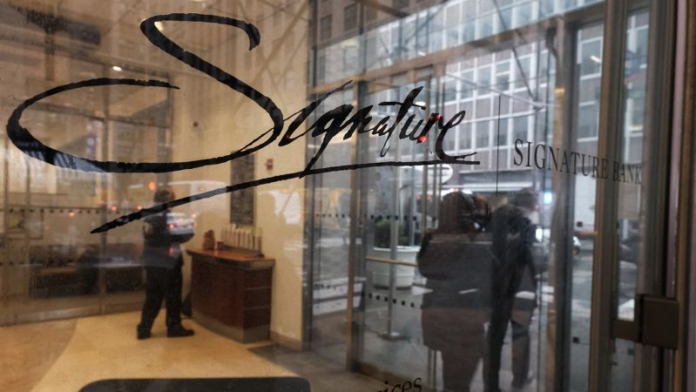New York CNN —
The collapse of Signature Bank was due to “poor management,” according to a report from the Federal Deposit Insurance Corporation released Friday.
Bank management “did not always heed FDIC examiner concerns, and was not always responsive or timely in addressing FDIC supervisory recommendations,” the report said.
Contagion effects from Silicon Valley Bank’s failure and Silvergate Bank’s self-liquidation, which occurred just days before Signature Bank was forced to close, helped ignite the run on deposits, the FDIC report stated. But the FDIC said that was not the root cause of Signature Bank’s failures.
In particular, bank management did not fully understand the risks associated with accepting crypto deposits, which comprised more than 20% of its total deposits, the FDIC report said.
“When that industry started to turn and interest rates started to rise, those deposits started leaving the bank,” Marshall Gentry, chief risk officer at the FDIC, said on a call with reporters Friday. “Even though they were crypto cash deposits, it was a traditional kind of bank run.”
Signature Bank had $110 billion in assets at the end of 2022, making it the 29th-largest US bank. The FDIC said the bank was overreliant on uninsured deposits, which accounted for 90% of overall deposits at the end of 2022, according to FDIC quarterly banking data.
On the supervisory side, the FDIC acknowledged it fell short when it came to providing Signature Bank with adequate and timely reviews, citing staffing shortages at the agency.
The FDIC’s report comes on the heels of the Federal Reserve’s report, which found that SVB failed due to a similar lack of internal risk management. The report also said that supervisors at the Fed “did not fully appreciate the extent of the vulnerabilities as Silicon Valley Bank grew in size and complexity.” And when they identified risks at SVB, they did not work with the bank to resolve the issues in a timely manner, the report found.
The FDIC led the investigation into Signature Bank, a New York state-charted bank, since it was the primary regulator. Signature Bank was not a member of the Federal Reserve System, and therefore was not directly regulated or supervised by the Fed, whereas SVB was.
The FDIC report made few recommendations for regulatory changes.
This story is developing and will be updated.




